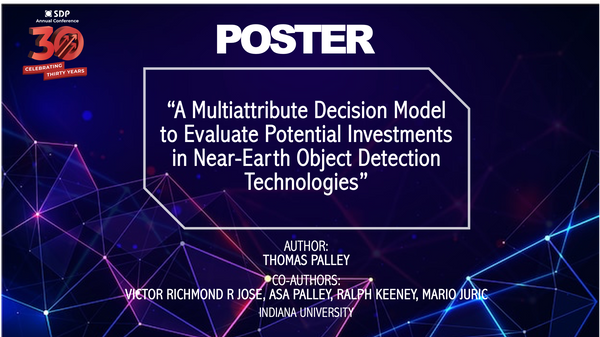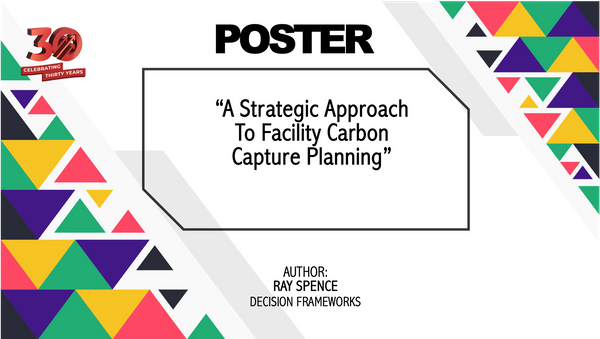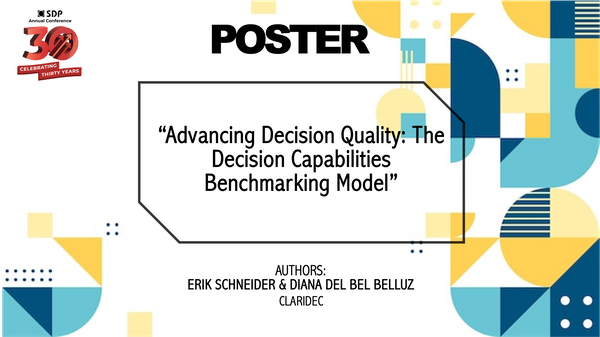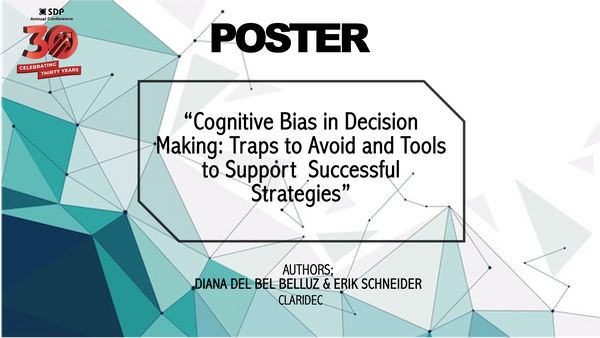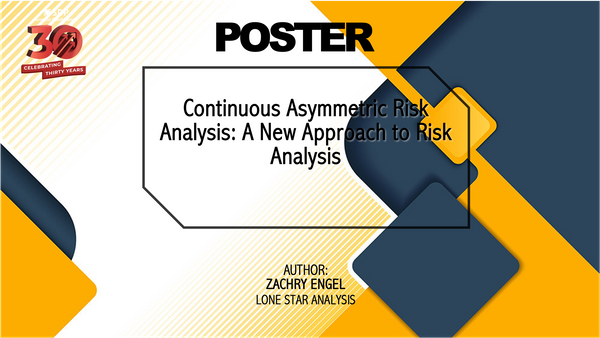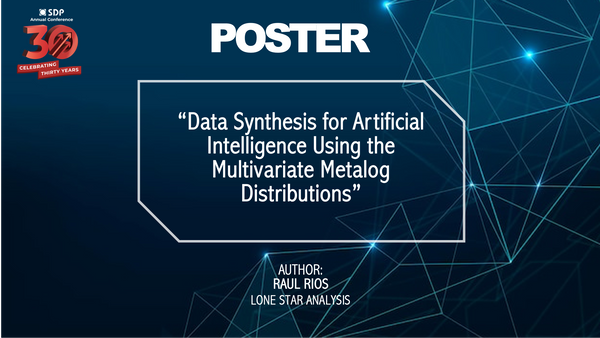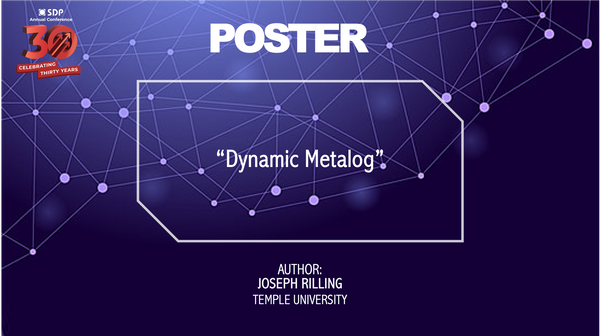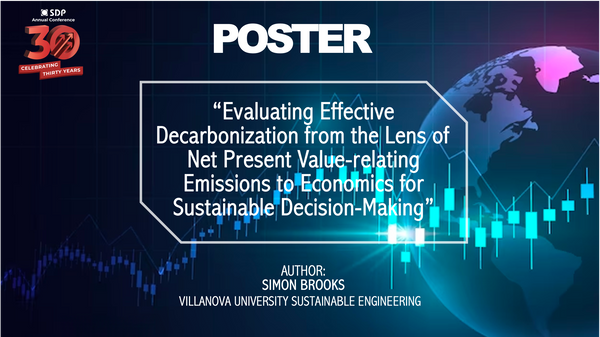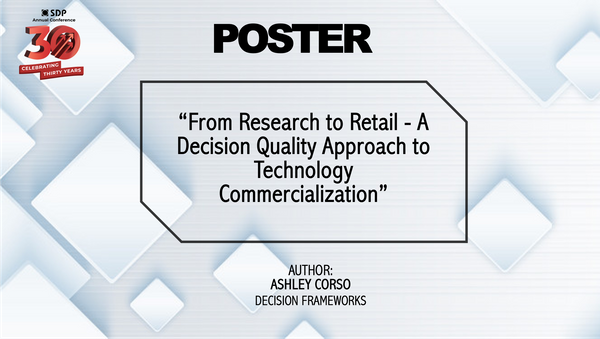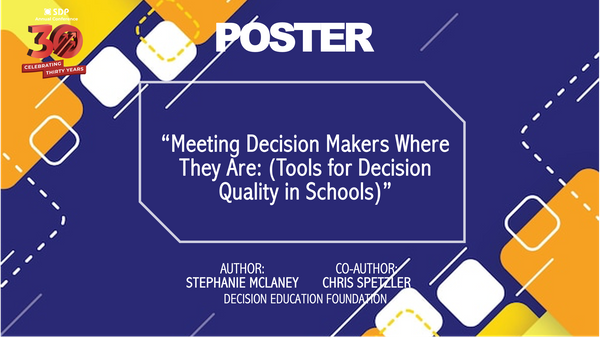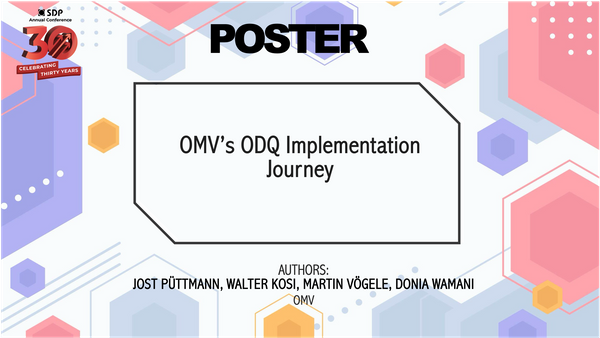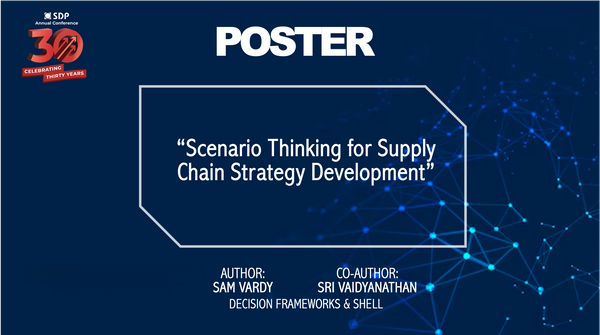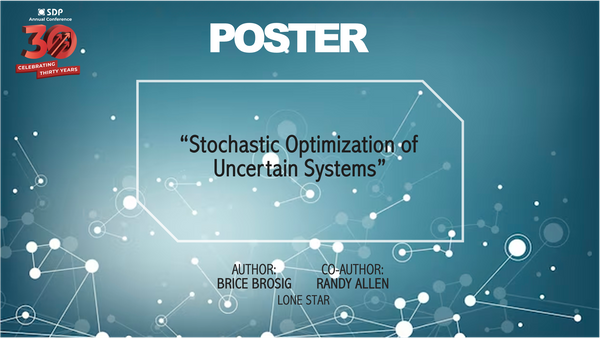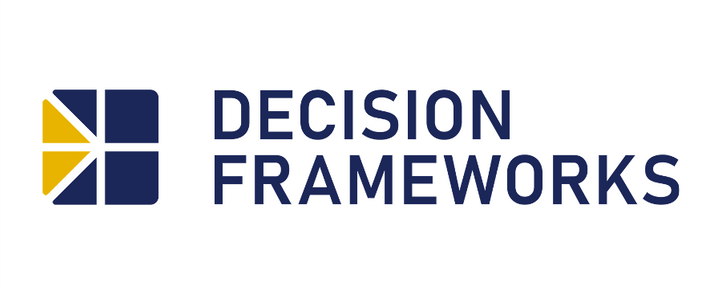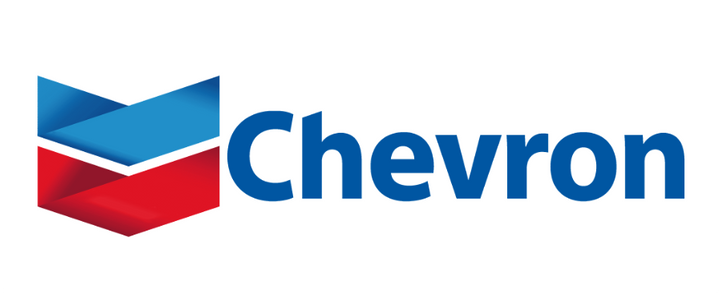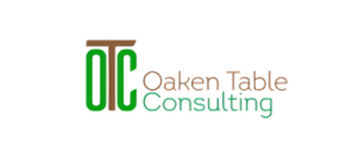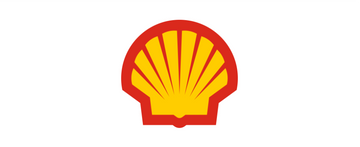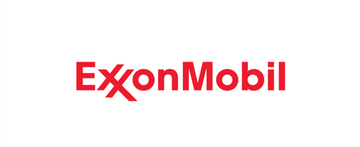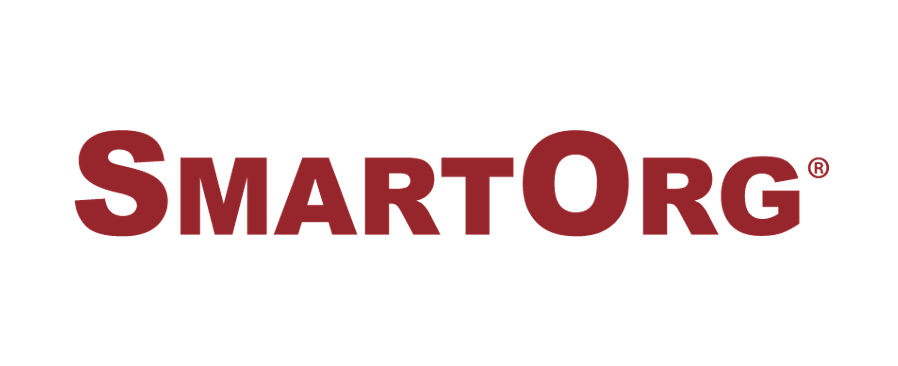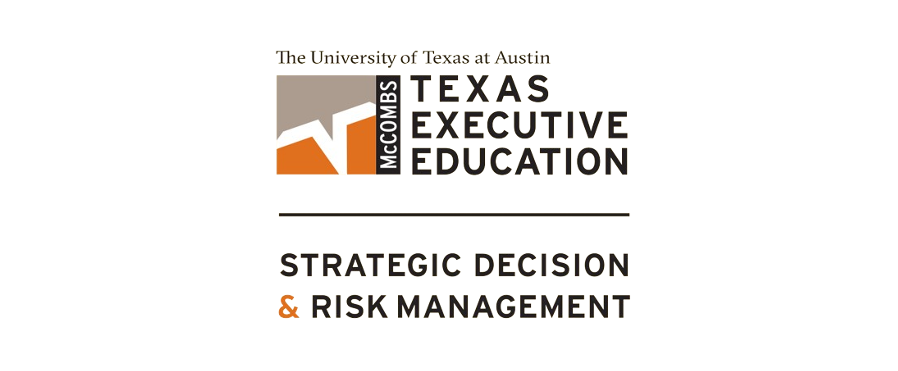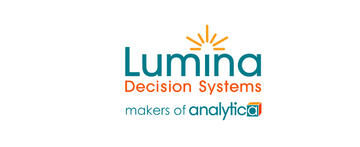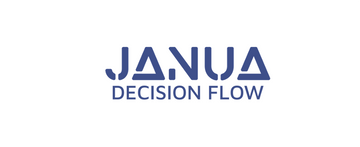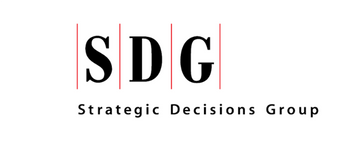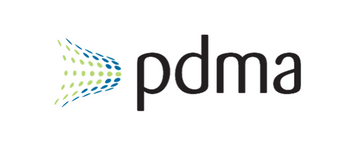Posters
The Society of Decision Professionals (SDP) is pleased to announce our Call for Posters for Students + Early Career Professionals with 10 years or less of experience in the field of decision analysis or related disciplines. This poster session takes place at the Annual SDP Conference & Workshops, www.sdpevents.com, which is celebrating 30 years of conferencing! The conference will take place in the vibrant city of Washington DC at the Hilton Arlington hotel in Arlington, Virginia, from April 15-18, 2024.
Mission and Opportunity:
Aligned with one of our key mission pillars, SDP is dedicated to the education and engagement of young professionals in the science of decision-making. This session offers a unique opportunity to showcase your research, engage in multidisciplinary collaborative discussions, and address unsolved issues in the realm of Decision Science theory and applications.
Conference Theme:
The theme for this milestone conference is "Decision Making in a Dynamic World." We will focus on five key industries: Pharma, Energy, Government, Natural Resources/Sustainability. Our Early Career Poster Session aims to contribute fresh perspectives to these dynamic fields.
DETAILS FOR POSTER CREATION & DISPLAY
Contact Information: For any questions or clarifications, please reach out to Julia Varshavsky, the Chair of the Poster Session, at varshavsky.julia@occampoint.com or sdpevents@decisionprofessionals.com.
Creating the Poster/Format:
- Dimensions: 36 inches by 48 inches, one sided
- Poster Title: Please use large fonts (e.g., Arial >80 points) to attract viewers
- Subtitle: smaller font to display authors, affiliations, and sources of funding for research (as applicable)
- Optional: include author(s) contact information to allow follow up
- Costs: Authors are responsible for the costs associated with creating, printing, and shipping the poster display.
- Template: You can use your own format and template (including your logo or contact information is encouraged)
Transporting the Poster
- We recommend hand-carrying posters to the conference using tubular packaging or a portfolio case
When will the Poster Session Take Place?
- The Poster Sessions will occur on April 16 and 17 from 5:00 PM to 6:30 PM.
- At least one of the authors must be present at the assigned poster space during April 16 and 17 Poster Sessions to discuss their work
- Posters will remain on display for the duration of the conference, allowing attendees to view them during breaks and free time
When/How Should I Set Up for the Posters?
- Setup: Posters should be set up either in the evening of April 15 or the morning of April 16 before the conference begins at 8:00 AM. Exceptions can be made if circumstances prevent setting up during the recommended times, with arrangements made directly with SDP.
- Poster Board Number: upon check-in at the registration desk, SDP will assign a poster board number and show you to the designated poster session area. A cut-out of your number will be displayed on your easel for easy identification. Please keep your assigned number visible at all times.
- Poster Display: SDP will provide a tack board and easel for display. Velcro, pushpins, or thumbtacks will be provided by SDP at check-in for mounting your poster.
The SDP looks forward to your active participation in this enriching experience. We anticipate a successful Poster Session that will contribute to the advancement of Decision Science.
Download PDF Copy here:
A Multiattribute Decision Model to Evaluate Potential Investments in Near-Earth Object Detection Technologies
Presented by: Thomas Palley
Co-authored by: Victor Richmond R Jose (Georgetown University - McDonough School of Business), Asa Palley (Indiana University - Kelley School of Business - Department of Operation & Decision Technologies), Ralph Keeney (Duke University - Fuqua School of Business), Mario Juric (University of Washington - Department of Astronomy)
Abstract:
Asteroids and other near-earth objects (NEOs) pose a significant ongoing threat to our planet, with the potential to catastrophically disrupt life on Earth. Advance detection is essential to be able to respond to any object on a collision course, but detection and tracking technologies require substantial financial commitments. In this paper, we provide a multiattribute utility framework to analyze whether and which NEO detection technologies are worthwhile. This framework enables rigorous and systematic understanding of the uncertainties, multiple objectives, and tradeoffs inherent to advance decisions involving low-probability, high-consequence events. Using some reasonable baseline parameter estimates, the model shows that the detection technology investment decision is driven more by the abundant population of small undiscovered NEOs than any other size group. We subsequently extend the framework to consider how a decision maker might evaluate alternatives when the risk affects a larger group of people, but the economic cost of investment is shouldered by a smaller subset of stakeholders.
more
A Strategic Approach To Facility Carbon Capture Planning
Presented by: Ray Spence (Decision Frameworks)
Abstract:
Carbon capture and storage has increasingly become a viable option for net zero emissions goals. However, economic viability remains a significant hurdle. Government policies can ease this hurdle through capex grants, carbon emissions caps and trades, and tax credits. This case study utilizes public data to evaluate the business case for carbon capture on various emitting facilities such as petrochemical and power generation plants. Given the magnitude of future carbon policy uncertainty, this case study demonstrates an efficient approach to deterministic evaluation of carbon capture options under different existing and potential future policies. This allows determination of 1) which facilities are economically viable and 2) under which carbon policies is there a business case?
Advancing Decision Quality: The Decision Capabilities Benchmarking Model
Authors: Erik Schneider & Diana Del Bel Belluz (Claridec)
Abstract:
The context of decision-making is ever-changing. The post-COVID reset, culture wars and the advent of generative AI have all impacted how organizations make decisions. Where does organizational decision-making stand today? Our Decision Capabilities Benchmarking Model, inspired by foundational work developed at Stanford University, introduces a novel framework for evaluating and enhancing decision-making processes within contemporary organizations. This model has been successfully tested with clients during the pre-Covid period and now we’re updating it for use by decision quality professionals in the new era.
Comparative Analysis and Model Differentiation
Drawing upon the latest research in behavioural decision science and practical insights from advisory practice, our model goes beyond traditional frameworks to examine decision factors such as decision dialog, quantification, external stakeholders and lookbacks. This multidimensional approach is tailored not just for theoretical insight but for practical deployment across diverse organizational settings. The benchmark model provides SDP attendees insight into the following representative gaps:
moreCognitive Bias in Decision Making: Traps to Avoid and Tools to Support Successful Strategies
Authors: Diana Del Bel Belluz & Erik Schneider (Claridec)
Abstract:
The failure of corporate strategies has been linked to common weaknesses in organizational decision-making. Survey data shows that the following decision-making weaknesses are implicated in 20-60% of failed corporate strategies: underestimating risks, overestimating rewards, overestimating management’s ability to predict and control future events, and leaders taking too much or too little risk given the risk and rewards expected.
The poster will:
- illustrate how cognitive biases seep into typical organizational decision processes to form decision traps
- propose an alternative decision model that integrates lessons from decision sciences and risk management to target common decision traps
- share powerful and practical strategies from the fields of decision, and sciences, neuroscience, and risk management that have been proven to de-bias decisions.
Continuous Asymmetric Risk Analysis: A New Approach to Risk Analysis
Author: Dr. Zachry Engel (Lone Star Analysis)
Abstract:
The current Risk Reporting Matrix, or simple risk matrix, is a tool used by many decision-makers, including those in the Department of Defense. The risk matrix is often used due to its simplicity to understand and create. However, it is a tool that is not well suited for proper decision making and risk analysis. The risk matrix is built using two 5-point Likert scales, one to represent the likelihood of an event and one for its consequence. This gives the user of the risk matrix only 25 possibilities for a likelihood-consequence combination. This forces users to make subjective decisions and interpretation of the risk matrix since the “risk-value” generated by the risk matrix is either a single number or a pair of numbers to represent the combination of likelihood and consequence. Furthermore, the risk matrix does not allow its user to evaluate the impact of mitigation and prevention measures to reduce the likelihood and impact of the risk event. For these reasons, the risk matrix should not be used as a tool for decision making or risk analysis.
more
DATA SYNTHESIS FOR ARTIFICIAL INTELLIGENCE USING THE MULTIVARIATE METALOG DISTRIBUTIONS
Author: Raul Rios (Lone Star Analysis)
Abstract:
To achieve high prediction accuracy, common Artificial Intelligence (AI) methods require vast amounts of training datapoints. Such methods, therefore, have diminished usefulness when data is scarce. One option to alleviating data scarcity is to generate new synthetic datapoints that are similar to the original dataset. A potential way to do this is to create a probability distribution fit to the original data and then randomly sample from that distribution to generate synthetic – but realistic – datapoints. A plethora of distributions are available for smooth, continuous data (e.g., normal, Student’s t, Cauchy, logistic, or beta) however, in many cases, it may be unclear which distribution would best capture the reality of the data (shape, skewness, tail behavior, etc.). In addition, the distribution fitting process for these approaches is often complex, subjective, and non-convergent. This paper explores the use of metalog distributions which alleviate these problems by providing an approachable, flexible distribution with closed-form formulations for fitting. We demonstrate the efficacy of metalog distributions in generating synthetic data for training an AI model. We use examples with correlated multi-variate data and measure the impact of statistical copulas for the multivariate metalog. Finally, we compare the metalog results with those from a multi-variate gaussian fit.
more
DYNAMIC METALOG
Author: Joseph Rilling (Temple University)
Abstract:
The recently introduced metalog distributions (Keelin 2016) present an alternative to traditional probability distributions. Metalog distributions are extremely flexible and can be easily fit via ordinary least squares estimation. Once fit, a metalog distribution immediately yields a CDF, PDF, and quantile function, making decision analysis and monte carlo methods trivial.
The metalog procedure needs to estimate the percentile of each observation. All current methods calculate the percentiles by implicitly assuming observations are independently and identically distributed from the same static population. This assumption is not always met, as populations naturally evolve with time. Keelin and Howard 2021 presents a Bayesian updating procedure, which works well when using information gathered from one population to help fit a second population. However, this procedure does not address the deeper and more nuanced problem of continuously evolving populations.
This work presents the dynamic metalog, a novel way to extend metalogs to settings with continuously evolving populations. This new method is a latent variable dependent dynamic linear model and presents a new outlook on population time series. The dynamic metalog treats the percentiles as unknown latent variables and can sample from the joint distribution of the latent percentiles and the model parameters. Starting with fishing data from the rmetalog package (Faber and Jung 2021), we create several examples of evolving populations. In these simulations, the dynamic metalog demonstrates the ability to adapt to changes in location, scale, and both at the same time.
more
EVALUATING EFFECTIVE DECARBONIZATION FROM THE LENS OF NET PRESENT VALUE—RELATING EMISSIONS TO ECONOMICS FOR SUSTAINABLE DECISION-MAKING
Author: Simon Brooks (Villanova University Sustainable Engineering)
Abstract:
This poster presents Carbon Calculus™—a novel integration of net present value (NPV) where the fundamental unit of measurement is CO 2 , not cash—as a critical approach for decarbonization decision-making. Across all large or small companies, federal or local governments, communities, families, and individuals, every action we take is fundamentally answering the decision-making question of how we should spend our limited time on Earth. The answer to this penultimate question will decide for how long humanity will thrive on pathways that sustain life on Earth equitably and justly for all people and all species of Earth’s biodiversity—today, and for all time. We are at a critical time in history that demands all decisions to be sustainable decisions, particularly decisions that have the potential to reduce our greenhouse gas (GHG) emissions. The science is clear: we need to stop emitting carbon dioxide (CO 2 ) and start removing the over-abundant CO 2 in our atmosphere. If you were asked to allocate $100 million to fund CO 2 reduction projects, how would you approach this decision? Making a sustainable decision requires comprehensive acknowledgement of the interconnectedness and complexity of our systems; all critical systems must be analyzed. This poster presents Carbon
more
From Research to Retail - A Decision Quality Approach to Technology Commercialization
Author: Ashley Corso (Decision Frameworks)
Abstract:
How can labs and organizations tackle the perennial R&D challenge of technology maturation and commercialization—often a long, winding road? They can look to Decision Quality which provides a clear path through the fraught journey.
This presentation shares a proven, unique Decision Quality (DQ) approach used by several national laboratories and the Critical Materials Institute (CMI), completed in 2022. The goal was the application of DQ to define alternative pathways for the maturation and commercialization of innovative technologies to overcome critical technical problems and secure industry partners. Key to the process was the combination of technology and commercialization issues into a cohesive frame that utilized helpful DQ tools such as Uncertainty Tables, Scenario Trees, and Strategy Tables in a collaborative manner with industry and laboratory partners.
Lymphocyte kinetics impact the overall survival of esophageal cancer patients receiving chemoradiation
Authors: Yiqing (Luna) Chen, MSc , Radhe Mohan, PhD, Yan Chu, MSc , Peter S.N. van Rossum, MD, PhD, Steven H. Lin, MD, PhD, Brian P. Hobbs, PhD
Abstract:
This study identified a notable correlation between the rate of depletion and recovery in radiation-induced lymphocyte kinetics after the commencement of CRT. Our findings suggested that, when compared to patients receiving PBT, patients receiving IMRT experienced more volatile ALC kinetics defined by steeper depletion of lymphocytes, followed by a rapid recovery. These significant fluctuations in lymphocyte count were strongly associated with poorer OS. The association with lymphocyte kinetics remains significant among non-surgical patients.
Meeting Decision Makers Where They Are: (Tools for Decision Quality in Schools)
Author: Stephanie McLaney (Decision Education Foundation)
Co-Author: Chris Spetzler (Decision Education Foundation)
Abstract:
Decision Education Foundation has tools for assisting youth, educators, and school administrators to learn and benefit from Decision Quality. The Decision Island activity is a creative way to introduce Decision Skills to students (7th –12th grade) and explore what it means to have decision power. The Decision Workspace worksheet helps students work through decisions on their own with an accessible one-page layout. Educators like teachers, counselors, and parents can benefit from the Conversations for Clarity tool (C4C)-- it incorporates more process than the Decision Workspace and is designed to support adults working with youth. Counselors use it to summarize and complement their decision-making conversations with students. Educators, who are not trained as counselors, appreciate C4C as a guide that helps bridge the gap when students turn to them in challenging situations. Parents can use Decision Quality nomenclature as a shared language when navigating difficult decisions with their child. Lastly, when School Administrators learn the Decision Quality model, process and multi-attribute analysis, they can effectively employ them to solve organizationally complex decisions. We have a case study from Oregon that included changing a schedule for four comprehensive high schools.
more
OMV’s ODQ implementation journey
Authors: Jost Püttmann, Walter Kosi, Martin Vögele, Donia Wamani (OMV)
Abstract:
OMV is a Vienna based energy company with an Upstream division and Exploration & Production
activities in 13 countries. In 2020 an ODQ implementation initiative was started. The implementation journey will be sketched from the initial connection to a digitization program, to developing a DQ flag ship. It will shed light on the challenges of a bottom-up initiative and will highlight important implementation factors that were rolled-out or falsely missed out.
The implementation initiative started in the Development area and used an upstream wide digitization program as “carrier” for obtaining resources & funds. An OMV implementation strategy was developed using information from SDP and external consultants and connected to already existing DQ elements that were already existing in the internal governance system or the overall ways of working.
The implementation strategy was built on the four workstream:
moreScenario Thinking for Supply Chain Strategy Development
Authors: Sam Vardy (Decision Frameworks)
Co-Author: Sri Vaidyanathan (Shell)
Abstract:
In an increasingly unpredictable world, scenario thinking is a crucial tool for developing robust supply chain strategies. The global landscape is characterized by uncertainty, with factors such as geopolitical tensions, technological disruptions, climate change, and pandemics, all of which can significantly impact supply chains. Scenario thinking allows us to anticipate and prepare for a range of possible futures, rather than betting on a single predicted outcome. By considering multiple scenarios, supply chain strategists can identify common elements across different futures and build flexible strategies that can withstand various eventualities. This approach enhances resilience, ensuring supply chains can adapt and thrive amidst uncertainty. Therefore, understanding and applying scenario development and thinking can be incredibly valuable for successful supply chain strategy development.
moreSTOCHASTIC OPTIMIZATION OF UNCERTAIN SYSTEMS
Author: Bryce Brosig
Co-author: Randy Allen
Abstract:
This paper demonstrates an optimization technique, which builds on R. Allen’s Adaptive Nonconvex Optimization technique (I/ITSEC in 2019), where one can find optimal control variables for a system that contains uncertainty, that is, one or more of the state variables are stochastic. This optimization technique, in addition to being gradient free and effective on discontinuous and/or non-convex problems, builds a topology of the system robust enough that an optimal solution can be extracted from a noisy objective function. This allows one to accurately model systems that are, in fact, uncertain and still reason about the optimality of a solution.
In this paper, we model the flight of a missile and seek to optimize the uncertain flight conditions by maximizing the lift-to-drag ratio. We choose the uncertain state variables to be Mach number and altitude, with the uncertain control variable to be angle-of-attack. All three are represented by distribution functions from which they will draw values for different evaluations of the noisy objective function. In the end, an optimal angle-of-attack will determine the maximum lift-to-drag ratio (and thus maximum range) among the stochastic uncertainties in the remaining flight conditions, Mach number and altitude.
more
Q&A SPONSOR
PATRON SPONSOR

